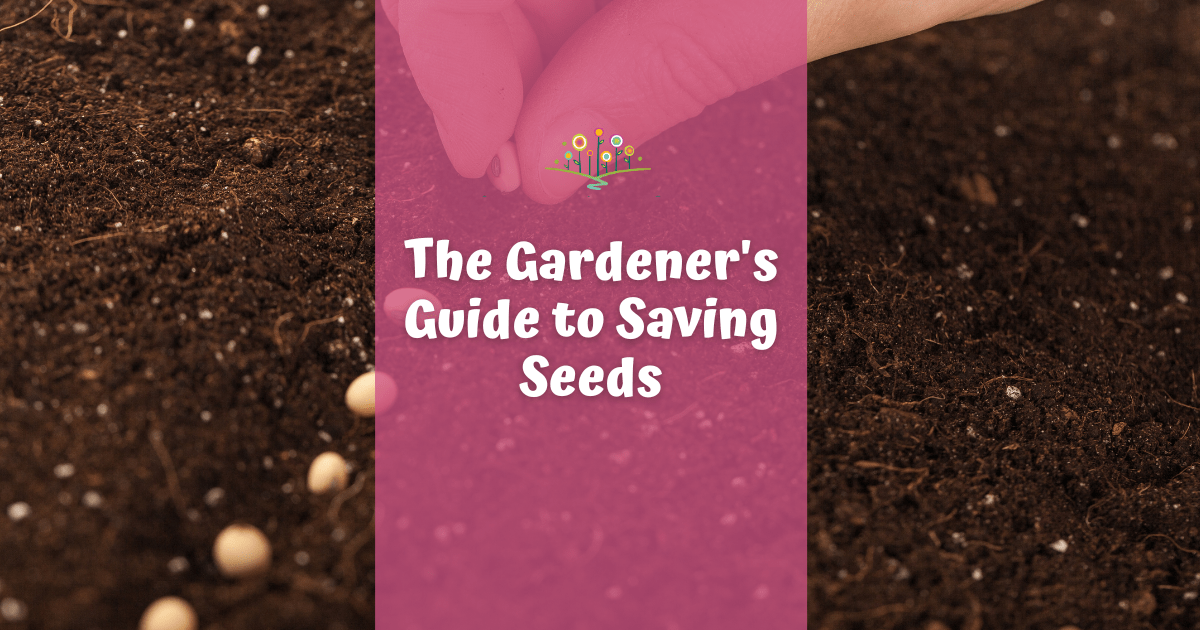
You did it! You’ve grown your ideal garden to date, but… the season is waning, and your perfect plants are nearing the end of their life cycle. But we have good news! By properly collecting and storing their seeds, you can have a good chance of re-growing that same amazing garden next year!
There are many reasons to save seeds from your garden:
- You’ll save money (since you don’t have to buy new seeds each season).
- Your plants will grow progressively stronger and healthier as they adapt to your garden’s conditions.
- You can join a seed-swapping group and trade for different hard-to-find varieties.
- You want to keep growing that same perfect tomato year after year.
- You’re a collector-hobbyist type who wants to start a seed collection.
Ready to start saving seeds? First, there are a few things you should know. You must be meticulous about the process to ensure your saved seeds are viable for future use. Here are some tips to help you start saving:
Collecting Seeds
1. Timing is Key: When collecting seeds, timing is everything. Choose mature, healthy plants at the peak of their growth. For “wet” seeds like tomatoes, melons, and pumpkins, wait until the fruits are fully ripe. “Dry” seeds like flowers, peas, and beans should be allowed to wither on the plant naturally. When right, gently remove the seeds and separate them from any surrounding plant material.
2. Quality Matters: Collect seeds from open-pollinated or heirloom varieties for best results. This way, the best traits of their “ancestors” will be passed down, and you will continue to grow thriving plants. Avoid cross-pollinated hybrids if possible since there’s no guarantee of quality.
Saving Seeds
3. Cleaning and Drying: The next step is to clean and dry the seeds. This prevents mold and ensures longevity. Use a fine sieve to remove excess pulp or debris. Then, spread a single layer of seeds on a paper towel or fine mesh screen and place it in a dry, well-ventilated area away from direct sunlight. Stir the seeds occasionally to ensure even drying.
4. Labeling and Organization: Organize by labeling your seeds with the plant’s name, collection date, and any relevant notes. Accurate labeling is important to help you keep track of your seeds and to make sure you’re using the oldest seeds first.
5. Testing Seed Viability: Before storing your seeds, test their viability. Place a few seeds on a damp paper towel and seal them in a plastic bag. After a few days, check to see how many seeds have sprouted. This determines the germination rate and helps you decide how many seeds to plant in the future.
Storing Seeds
6. Cool and Dry: Proper storage is critical to maintaining the viability of your seeds. Place dried seeds in airtight containers such as glass jars or envelopes. Consider adding a moisture-absorbing packet. Store these containers in a cool, dark, dry place. Maintaining a consistent temperature prevents premature germination or decay.
7. Freezing Option: Some seeds benefit from long-term storage in the freezer, which often extends their shelf life. (Make sure to seal the seeds in airtight bags before freezing.) Once removed from the freezer, allow the seeds to return to room temperature before opening the container.
8. Longevity: Different types of stored seeds have varying lifespans. Some, like tomato seeds, can last up to six years, while others, like lettuce, may have a lifespan of only two years. Research the longevity of your specific seeds and plan accordingly.
Using Seeds
9. Caring for Different Seeds: When using your saved seeds, don’t just plop them straight into the dirt. Certain plants require different pre-treatments before sowing. Some seeds need stratification (exposure to cold temperatures), while others should be sacrificed (by scratching their hard coats) or soaked in water to promote germination.
10. Sharing the Bounty: Sharing is caring! So make sure you share your bounty with fellow gardeners. Exchange seeds with friends, family, or local gardening groups to promote biodiversity and foster community among fellow garden enthusiasts.
Saving and reusing seeds is a rewarding practice that allows you to maintain the circle of life within your garden. By following these steps, you’ll be well-equipped for your journey in sustainable gardening.
For more gardening ideas, check out Six DIY Ways to Upcycle Your Garden, Top Ten Tips for Gardening on a Budget, and How to Prevent Pests in Your Garden Without Pesticides.
To see what’s springing up around the greenhouse, sign up for our newsletter.



